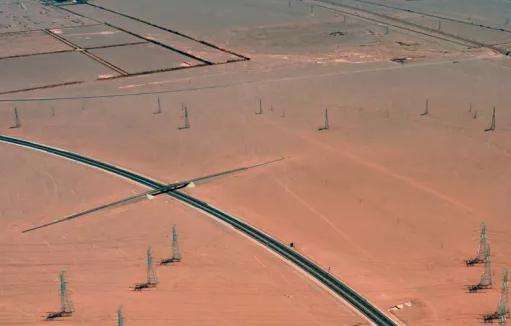Solar panel required:
Voltage V = 12×1.2= 14.4 (V).
Current? I = Battery current ÷ 3 (A).
Power?P = voltage V × current?I = (W).
Detailed information:
Solar cells are devices that directly convert light energy into electrical energy by the photoelectric effect or photochemical effect. Solar cells in sCrystalline silicon that works with the photoelectric effect are the most widespread, while thin-film cells that work with the photochemical effect are still in their infancy.
Principle
Sunlight shines on the p-n junction of the semiconductor, forming new hole-electron pairs. Under the action of the integrated electric field of the p-n junction, the photogenerated holes move towards. the p region and the photogenerated holes flow towards the p region. Electrons flow to area n and when the circuit is turned on, a current is generated. This is how photovoltaic solar cells work.
There are two methods of solar power generation: one is the light-heat-electricity conversion method and the other is the direct light-electricity conversion method.
Light-heat-electricity conversion
The light-heat-electricity conversion method uses thethermal energy generated by solar radiation to produce electricity. Generally, a solar collector converts the absorbed thermal energy. The steam from the working fluid then drives the steam turbine to produce electricity. The first process is a light-heat conversion process; the second process is a heat-to-electricity conversion process, which is the same as ordinary thermal power generation. The disadvantages of solar thermal energy production are low efficiency and high cost. Its investment is estimated to be at least 5 to 10 times more expensive than that of ordinary thermal power plants. A 1,000 MW solar thermal power plant requires an investment of 2.0 to 2.5 billion US dollars, and the average investment for 1 kW is 2,000 to 2,500 US dollars. Therefore, it can only be used on a small scale for special occasions, and large scale usescale is not economically profitable and cannot compete with ordinary thermal or nuclear power plants.
Direct conversion of light into electricity
Energy production by solar cells is based on the photoelectric properties of specific materials. Black bodies (like the sun) emit electromagnetic waves of different wavelengths (corresponding to different frequencies), such as infrared, ultraviolet, visible light, etc. When these rays shine on different conductors or semiconductors, the photons interact with free electrons in the conductor or semiconductor to produce an electric current.
The shorter the wavelength and the higher the frequency of the ray, the higher its energy. For example, the energy of ultraviolet rays is much higher than that of infrared rays. But not all wavelengths of rays' energy can be convertedtied into electrical energy. It should be noted that the photoelectric effect has nothing to do with the intensity of the ray. Only when the frequency reaches or exceeds the threshold that can produce the photoelectric effect can current be generated.
The maximum wavelength of light that can produce a photoelectric effect in a semiconductor is related to the band gap of the semiconductor. For example, the bandgap of crystalline silicon is about 1.155 eV at room temperature, hence light. with a wavelength less than 1100 nm is necessary. Can make crystalline silicon produce photoelectric effect. Power generation by solar cells is a renewable and environmentally friendly way to produce electricity. During the electricity generation process, no greenhouse gases such as carbon dioxide are produced and no pollution is caused to the'environment.
According to the production materials, they are divided into silicon-based solid-state batteries, CdTe thin-film batteries, CIGS thin-film batteries, dye-sensitized thin-film batteries, material batteries organic, etc. Silicon batteries are divided into monocrystalline batteries, polycrystalline batteries and amorphous silicon thin film batteries.
The most important parameter for solar cells is conversion efficiency. Among the laboratory-developed silicon-based solar cells, the efficiency of monocrystalline silicon cells is 25.0%, the efficiency of polycrystalline silicon cells is 20.4%, and CIGS thin films The efficiency of the cell reaches 19.6%, the efficiency of CdTe thin film cell reaches 16.7%, and the efficiency of amorphous silicon (amorphous silicon) thin film cell is 10.1%
The solar cell isa photovoltaic component that can convert energy. The basic structure is formed by joining P-type and N-type semiconductors. The basic material of semiconductors is "silicon", which is non-conductive, but if different impurities are mixed in the semiconductor , it can be transformed into P-type and N-type semiconductors, and the P-type semiconductor then has a hole (the P-type semiconductor has one less negatively charged electron, which can be considered as an additional positive charge), and the potential difference between the N-type semiconductor and the N-type semiconductor has an additional free electron to generate current.
So when sunlight shines, the light energy excites the electrons in the silicon atoms, leading to convection of electrons and holes. These electrons and holes are affected by the built-in potential and are of N and type respectively. The semis-P-type conductors attract each other and come together at both ends. At this point, if the exterior is connected with electrodes, a loop is formed. This is the principle of energy production by solar cells.
To put it simply, the principle of photovoltaic solar power generation is to use solar cells to absorb sunlight with a wavelength of 0.4 μm to 1.1 μm (for silicon crystals) and directly convert light energy into electrical energy. to go out. .
References:
Generally, when the solar panel voltage reaches 17.5V, the 12V battery starts charging (the maximum open circuit voltage of the solar panel in 12V system is 21V). The voltage will drop to 13.5-14 V, the remaining voltage drop adds to itself. This is the characteristic of solar panels. The tension of the pannel must be higher than the battery voltage to charge. Hope this helps you














